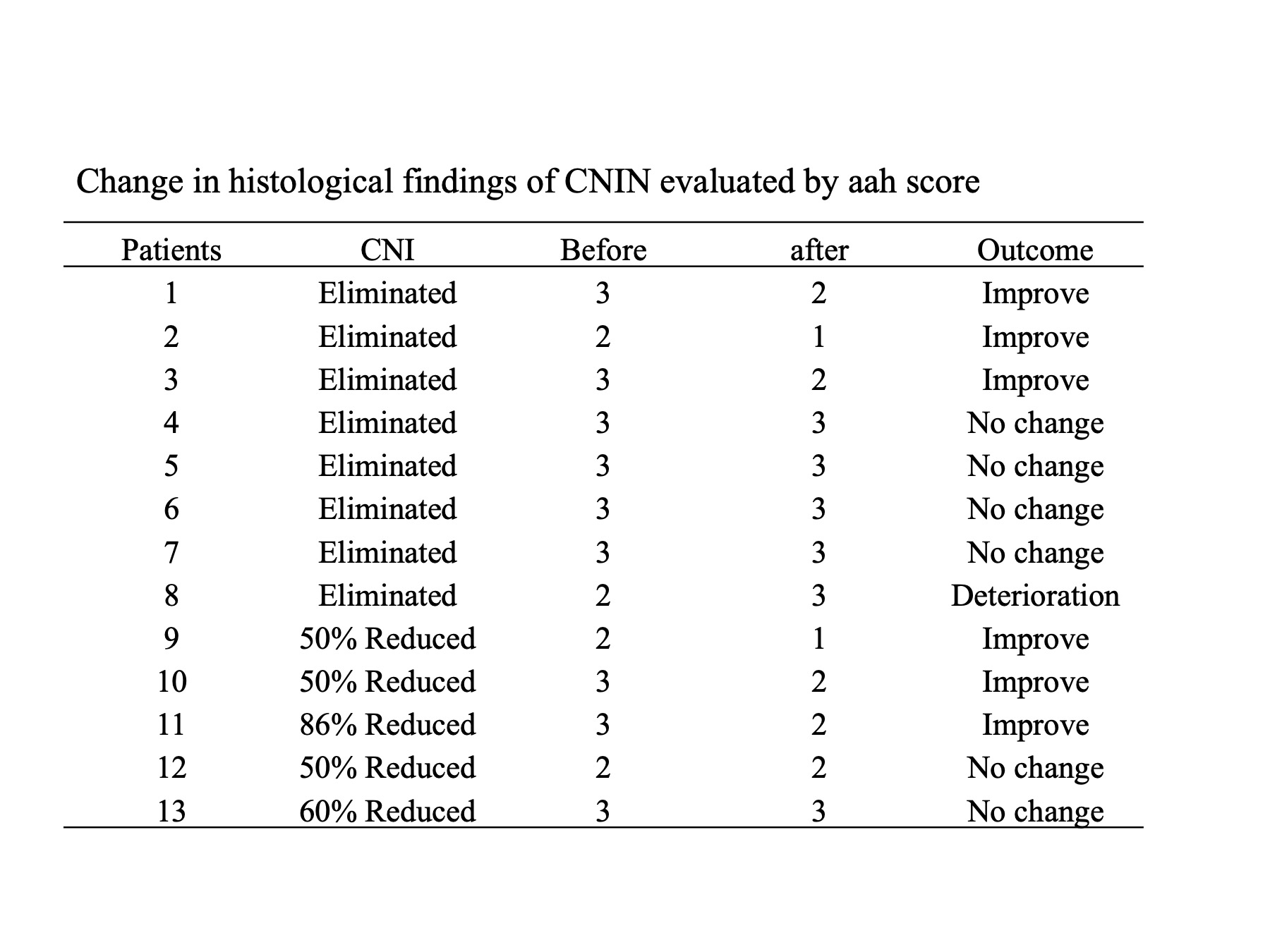Conversion to Everolimus-Based Immunosuppression Regimen with Calcineurin Inhibitor Reduction Ameliorates Histological Damage in Kidney Transplant Recipients with Calcineurin Inhibitor-Induced Nephrotoxicity
Hokkaido University Hospital, Sapporo, Japan
Meeting: 2022 American Transplant Congress
Abstract number: 1681
Keywords: Calcineurin, Graft function, Kidney transplantation, Nephrotoxicity
Topic: Clinical Science » Kidney » 38 - Kidney Immunosuppression: Novel Regimens and Drug Minimization
Session Information
Session Name: Kidney Immunosuppression: Novel Regimens and Drug Minimization
Session Type: Poster Abstract
Date: Tuesday, June 7, 2022
Session Time: 7:00pm-8:00pm
 Presentation Time: 7:00pm-8:00pm
Presentation Time: 7:00pm-8:00pm
Location: Hynes Halls C & D
*Purpose: In the last two decades, the short-term results for kidney transplantation (KTX) have improved owing to the use of calcineurin inhibitors (CNIs). However, long-term administration of CNI is associated with nephrotoxicity, which may lead to eventual graft loss. Therefore, CNI reduction or elimination is important to improve the long-term outcomes of renal allograft. In this study, we evaluated the efficacy and safety of conversion to an everolimus (EVR) -based regimen with reduction/elimination of CNI.
*Methods: Fifteen kidney recipients (12 men, 3 women) with biopsy-proved CNI-induced nephrotoxicity (CNIN) were enrolled. The median age of patients at the time of CNIN diagnosis was 58 years, and the median duration from the time of KTX was 9.3 years. EVR was introduced and CNI dosage was reduced by at least 50% (n=7) or eliminated (n=8). All recipients received Mycophenolate mofetil and steroid. At the time of conversion, all recipients did not develop rejection or donor specific antibody (DSA). We evaluated changes in renal function, proteinuria, incidence of acute rejection, development of DSA and histological change in CNIN. We also evaluated anti-donor T cell response using CFSE-MLR.
*Results: EVR have been stopped in two others due to the development of severe proteinuria 6 and 21 months after conversion. The outcome of conversion was evaluated in the remaining 13 patients. The median follow-up period after conversion was 3.2 years. There was no significant difference in renal function or proteinuria between before and after CNI reduction/elimination (Serum creatinine (mg/dl), before 1.4±0.4 vs after 1.56±0.6; proteinuria(g/gcre), before 0.66±1.2 vs after 0.82±0.69). Importantly, no patient had an acute or chronic rejection episode during follow-up. Furthermore, no recipient developed DSA. On histological analysis at the time of CNIN diagnosis, kidney biopsy showed an aah score of 2 in four cases, and a score of 3 in 9 cases. Interestingly, the change in the aah score reflected that histological damage was ameliorated in six patients, it remained unchanged in another six, and deteriorated in only one patient after CNI reduction/elimination. Furthermore, MLR study shows loss of anti-donor response in both CD4 and CD8 T cells.
*Conclusions: Conversion to EVR-based immunosuppression regimen in conjunction with CNI reduction ameliorates histological damage related to CNIN in kidney transplant recipients. Therefore, the conversion can be an effective treatment for CNIN.
To cite this abstract in AMA style:
Hotta K, Iwahara N, Tanabe T, Shinohara N. Conversion to Everolimus-Based Immunosuppression Regimen with Calcineurin Inhibitor Reduction Ameliorates Histological Damage in Kidney Transplant Recipients with Calcineurin Inhibitor-Induced Nephrotoxicity [abstract]. Am J Transplant. 2022; 22 (suppl 3). https://atcmeetingabstracts.com/abstract/conversion-to-everolimus-based-immunosuppression-regimen-with-calcineurin-inhibitor-reduction-ameliorates-histological-damage-in-kidney-transplant-recipients-with-calcineurin-inhibitor-induced-nephrot/. Accessed December 19, 2025.« Back to 2022 American Transplant Congress

